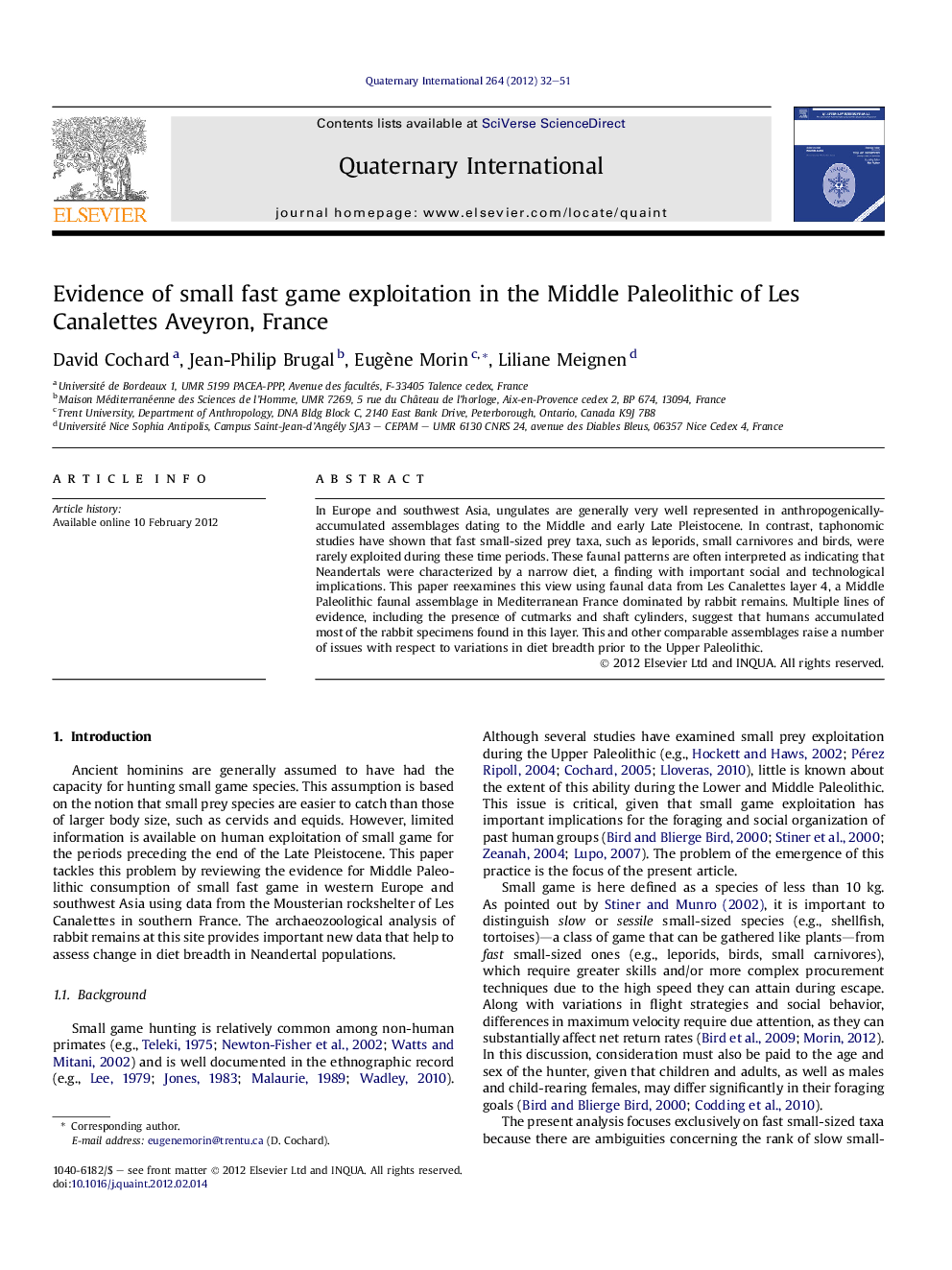| Article ID | Journal | Published Year | Pages | File Type |
|---|---|---|---|---|
| 1042763 | Quaternary International | 2012 | 20 Pages |
In Europe and southwest Asia, ungulates are generally very well represented in anthropogenically-accumulated assemblages dating to the Middle and early Late Pleistocene. In contrast, taphonomic studies have shown that fast small-sized prey taxa, such as leporids, small carnivores and birds, were rarely exploited during these time periods. These faunal patterns are often interpreted as indicating that Neandertals were characterized by a narrow diet, a finding with important social and technological implications. This paper reexamines this view using faunal data from Les Canalettes layer 4, a Middle Paleolithic faunal assemblage in Mediterranean France dominated by rabbit remains. Multiple lines of evidence, including the presence of cutmarks and shaft cylinders, suggest that humans accumulated most of the rabbit specimens found in this layer. This and other comparable assemblages raise a number of issues with respect to variations in diet breadth prior to the Upper Paleolithic.
